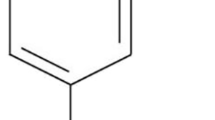Abstract
Objective
Curcumin is a plant polyphenolic compound and a major component of spice turmeric (Curcuma longa). It has been reported to possess free radical-scavenging, iron-chelating, and anti-inflammatory properties in different tissues. Our previous study showed that curcumin protects MES23.5 dopaminergic cells from 6-hydroxydopamine (6-OHDA)-induced neurotoxicity in vitro. The present study aimed to explore this neuroprotective effect in the 6-OHDAlesioned rat model of Parkinson’s disease in vivo.
Methods
Rats were given intragastric curcumin for 24 days. 6-OHDA lesioning was conducted on day 4 of curcumin treatment. Dopamine content was assessed by high-performance liquid chromatography with electrochemical detection, tyrosine hydroxylase (TH)-containing neurons by immunohistochemistry, and iron-containing cells by Perls’ iron staining.
Results
The dopamine content in the striatum and the number of TH-immunoreactive neurons decreased after 6-OHDA treatment. Curcumin pretreatment reversed these changes. Further studies demonstrated that 6-OHDA treatment increased the number of iron-staining cells, which was dramatically decreased by curcumin pretreatment.
Conclusion
The protective effects of curcumin against 6-OHDA may be attributable to the ironchelating activity of curcumin to suppress the iron-induced degeneration of nigral dopaminergic neurons.
Similar content being viewed by others
References
Youdim MB, Ben-Shachar D, Riederer P. The role of monoamine oxidase, iron-melanin interaction, and intracellular calcium in Parkinson’s disease. J Neural Transm Suppl 1990, 32: 239–248.
Jiang H, Song N, Wang J, Ren LY, Xie JX. Peripheral iron dextran induced degeneration of dopaminergic neurons in rat substantia nigra. Neurochem Int 2007, 51: 32–36.
Ke Y, Ming Qian Z. Iron misregulation in the brain: a primary cause of neurodegenerative disorders. Lancet Neurol 2003, 2: 246–253.
Youdim MB, Stephenson G, Ben Shachar D. Ironing iron out in Parkinson’s disease and other neurodegenerative diseases with iron chelators: a lesson from 6-hydroxydopamine and iron chelators, desferal and VK-28. Ann N Y Acad Sci 2004, 1012: 306–325.
Onyango IG. Mitochondrial dysfunction and oxidative stress in Parkinson’s disease. Neurochem Res 2008, 33: 589–597.
Sarafanov AG, Todorov TI, Kajdacsy-Balla A, Gray MA, Macias V, Centeno JA. Analysis of iron, zinc, selenium and cadmium in paraffin-embedded prostate tissue specimens using inductively coupled plasma mass-spectrometry. J Trace Elem Med Biol 2008, 22: 305–314.
Meissner W, Hill MP, Tison F, Gross CE, Bezard E. Neuroprotective strategies for Parkinson’s disease: conceptual limits of animal models and clinical trials. Trends Pharmacol Sci 2004, 25: 249–253.
Slikkker W, Youdim M, Palmer GC, Hall E, Williams C, Trembly B. The future of neuroprotection. Ann N Y Acad Sci 1999, 890: 529–533.
Hanasaki Y, Ogawa S, Fukui S. The correlation between active oxygens scavenging and antioxidative effects of flavonoids. Free Radic Biol Med 1994, 16: 845–850.
Morel I, Lescoat G, Cogrel P, Sergent O, Pasdeloup N, Brissot P, et al. Antioxidant and iron-chelating activities of the flavonoids catechin, quercetin and diosmetin on iron-loaded rat hepatocyte cultures. Biochem Pharmacol 1993, 45: 13–19.
Santel T, Pflug G, Hemdan NY, Schafer A, Hollenbach M, Buchold M, et al. Curcumin inhibits glyoxalase 1: a possible link to its antiinflammatory and anti-tumor activity. PLoS One 2008, 3: e3508.
Masuda T, Hidaka K, Shinohara A, Maekawa T, Takeda Y, Yamaguchi H. Chemical studies on antioxidant mechanism of curcuminoid: analysis of radical reaction products from curcumin. J Agric Food Chem 1999, 47: 71–77.
Daniel S, Limson JL, Dairam A, Watkins GM, Daya S. Through metal binding, curcumin protects against lead- and cadmiuminduced lipid peroxidation in rat brain homogenates and against lead-induced tissue damage in rat brain. J Inorg Biochem 2004, 98: 266–275.
Chen J, Tang XQ, Zhi JL, Cui Y, Yu HM, Tang EH, et al. Curcumin protects PC12 cells against 1-methyl-4-phenylpyridinium ioninduced apoptosis by bcl-2-mitochondria-ROS-iNOS pathway. Apoptosis 2006, 11: 943–953.
Wang J, Du XX, Jiang H, Xie JX. Curcumin attenuates 6-hydroxydopamine-induced cytotoxicity by anti-oxidation and nuclear factor-kappa B modulation in MES23.5 cells. Biochem Pharmacol 2009, 78: 178–183.
Jiang H, Song N, Xu H, Zhang S, Wang J, Xie J. Up-regulation of divalent metal transporter 1 in 6-hydroxydopamine intoxication is IRE/IRP dependent. Cell Res 2010, 20: 345–356.
Ma ZG, Wang J, Jiang H, Liu TW, Xie JX. Myricetin reduces 6-hydroxydopamine-induced dopamine neuron degeneration in rats. Neuroreport 2007, 18: 1181–1185.
Dexter DT, Statton SA, Whitmore C, Freinbichler W, Weinberger P, Tipton KF, et al. Clinically available iron chelators induce neuroprotection in the 6-OHDA model of Parkinson’s disease after peripheral administration. J Neural Transm 2011, 118: 223–231.
Ak T, Gulcin I. Antioxidant and radical scavenging properties of curcumin. Chem Biol Interact 2008, 174: 27–37.
Messner DJ, Sivam G, Kowdley KV. Curcumin reduces the toxic effects of iron loading in rat liver epithelial cells. Liver Int 2009, 29: 63–72.
Earl CD, Reum T, Xie JX, Sautter J, Kupsch A, Oertel WH, et al. Foetal nigral cell suspension grafts influence dopamine release in the non-grafted side in the 6-hydroxydopamine rat model of Parkinson’s disease: in vivo voltammetric data. Exp Brain Res 1996, 109: 179–184.
Wang J, Xu HM, Yang HD, Du XX, Jiang H, Xie JX. Rg1 reduces nigral iron levels of MPTP-treated C57BL6 mice by regulating certain iron transport proteins. Neurochem Int 2009, 54: 43–48.
Blum D, Torch S, Lambeng N, Nissou M, Benabid AL, Sadoul R, et al. Molecular pathways involved in the neurotoxicity of 6-OHDA, dopamine and MPTP: contribution to the apoptotic theory in Parkinson’s disease. Prog Neurobiol 2001, 65: 135–172.
Salazar J, Mena N, Hunot S, Prigent A, Alvarez-Fischer D, Arredondo M, et al. Divalent metal transporter 1 (DMT1) contributes to neurodegeneration in animal models of Parkinson’s disease. Proc Natl Acad Sci U S A 2008, 105: 18578–18583.
Jiang H, Luan Z, Wang J, Xie J. Neuroprotective effects of iron chelator Desferal on dopaminergic neurons in the substantia nigra of rats with iron-overload. Neurochem Int 2006, 49: 605–609.
Author information
Authors and Affiliations
Corresponding author
Rights and permissions
About this article
Cite this article
Du, XX., Xu, HM., Jiang, H. et al. Curcumin protects nigral dopaminergic neurons by iron-chelation in the 6-hydroxydopamine rat model of Parkinson’s disease. Neurosci. Bull. 28, 253–258 (2012). https://doi.org/10.1007/s12264-012-1238-2
Received:
Accepted:
Published:
Issue Date:
DOI: https://doi.org/10.1007/s12264-012-1238-2




